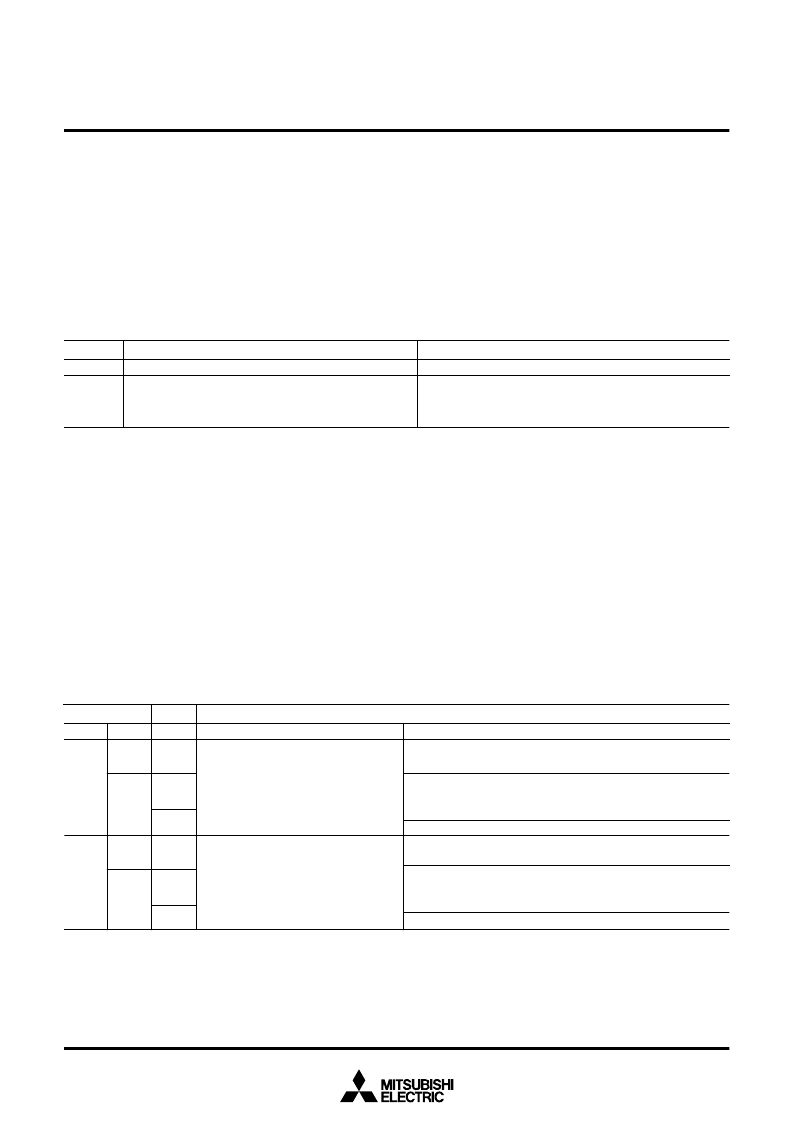- 您現(xiàn)在的位置:買(mǎi)賣(mài)IC網(wǎng) > PDF目錄370842 > M37274MA-053SP (Mitsubishi Electric Corporation) SINGLE-CHIP 8-BIT CMOS MICROCOMPUTER with CLOSED CAPTION DECODER and ON-SCREEN DISPLAY CONTROLLER PDF資料下載
參數(shù)資料
| 型號(hào): | M37274MA-053SP |
| 廠商: | Mitsubishi Electric Corporation |
| 英文描述: | SINGLE-CHIP 8-BIT CMOS MICROCOMPUTER with CLOSED CAPTION DECODER and ON-SCREEN DISPLAY CONTROLLER |
| 中文描述: | 單芯片8位CMOS微機(jī)隱蔽字幕解碼器和屏幕顯示控制器 |
| 文件頁(yè)數(shù): | 50/147頁(yè) |
| 文件大小: | 2042K |
| 代理商: | M37274MA-053SP |
第1頁(yè)第2頁(yè)第3頁(yè)第4頁(yè)第5頁(yè)第6頁(yè)第7頁(yè)第8頁(yè)第9頁(yè)第10頁(yè)第11頁(yè)第12頁(yè)第13頁(yè)第14頁(yè)第15頁(yè)第16頁(yè)第17頁(yè)第18頁(yè)第19頁(yè)第20頁(yè)第21頁(yè)第22頁(yè)第23頁(yè)第24頁(yè)第25頁(yè)第26頁(yè)第27頁(yè)第28頁(yè)第29頁(yè)第30頁(yè)第31頁(yè)第32頁(yè)第33頁(yè)第34頁(yè)第35頁(yè)第36頁(yè)第37頁(yè)第38頁(yè)第39頁(yè)第40頁(yè)第41頁(yè)第42頁(yè)第43頁(yè)第44頁(yè)第45頁(yè)第46頁(yè)第47頁(yè)第48頁(yè)第49頁(yè)當(dāng)前第50頁(yè)第51頁(yè)第52頁(yè)第53頁(yè)第54頁(yè)第55頁(yè)第56頁(yè)第57頁(yè)第58頁(yè)第59頁(yè)第60頁(yè)第61頁(yè)第62頁(yè)第63頁(yè)第64頁(yè)第65頁(yè)第66頁(yè)第67頁(yè)第68頁(yè)第69頁(yè)第70頁(yè)第71頁(yè)第72頁(yè)第73頁(yè)第74頁(yè)第75頁(yè)第76頁(yè)第77頁(yè)第78頁(yè)第79頁(yè)第80頁(yè)第81頁(yè)第82頁(yè)第83頁(yè)第84頁(yè)第85頁(yè)第86頁(yè)第87頁(yè)第88頁(yè)第89頁(yè)第90頁(yè)第91頁(yè)第92頁(yè)第93頁(yè)第94頁(yè)第95頁(yè)第96頁(yè)第97頁(yè)第98頁(yè)第99頁(yè)第100頁(yè)第101頁(yè)第102頁(yè)第103頁(yè)第104頁(yè)第105頁(yè)第106頁(yè)第107頁(yè)第108頁(yè)第109頁(yè)第110頁(yè)第111頁(yè)第112頁(yè)第113頁(yè)第114頁(yè)第115頁(yè)第116頁(yè)第117頁(yè)第118頁(yè)第119頁(yè)第120頁(yè)第121頁(yè)第122頁(yè)第123頁(yè)第124頁(yè)第125頁(yè)第126頁(yè)第127頁(yè)第128頁(yè)第129頁(yè)第130頁(yè)第131頁(yè)第132頁(yè)第133頁(yè)第134頁(yè)第135頁(yè)第136頁(yè)第137頁(yè)第138頁(yè)第139頁(yè)第140頁(yè)第141頁(yè)第142頁(yè)第143頁(yè)第144頁(yè)第145頁(yè)第146頁(yè)第147頁(yè)

50
SINGLE-CHIP 8-BIT CMOS MICROCOMPUTER with CLOSED CAPTION DECODER
and ON-SCREEN DISPLAY CONTROLLER
M37274EFSP
PRELIMINARY
Notice: This is not a final specification.
Some paramentic limits are subject to change.
MITSUBISHI MICROCOMPUTERS
Conditions for Setting Bit 4 of DSC3 to “1”
Data clock of 16 pulses has occured in sub-data slaice line
Data clock of 16 pulses has occured in sub-data slaice line
AND
Clock run-in pulse are detected 4 to 6 times
(10) 16-bit Shift Register
The caption data converted into a digital value by the comparator is
stored into the 16-bit shift register in synchronization with the data
clock. For the main data slice line, the contents of the high-order 8
bits of the stored caption data and the contents of the low-order 8
bits of the same data can be obtained by reading out data register 2
(address 00E5
16
) and data register 1 (address 00E4
16
), respectively.
For the sub-data slice line, the contents of the high-order 8 bits and
the contents of the low-order 8 bits can be obtained by reading out
the data register 4 (address 00ED
16
) and data register 3 (address
00EC
16
), respectively. These registers are reset to “0” at a falling of
V
sep
. Read out data registers 1 and 2 after the occurence of a data
slicer interrupt (refer to (11) Interrupt Request Generating Circuit).
(11) Interrupt Request Generating Circuit
The interrupt requests as shown in Table 6 are generated by
combination of the following bits; bits 5 and 6 of the clock run-in register
3 (address 0209
16
), bit 1 of the clock run-in register 2 (address
00E7
16
). Read out the contents of data registers 1 to 4 and the
contents of bits 3 to 7 of clock run-in detect registers 1 and 3 after the
occurence of a data slicer interrupt request.
Table 5. Setting Conditions for Caption Data Latch Completion Flag
Bit 7 of SP
0
1
Conditions for Setting Bit 7 of DSC1 to “1”
Data clock of 16 pulses has occured in main data slaice line
Data clock of 16 pulses has occured in main data slaice line
AND
Clock run-in pulse are detected 4 to 6 times
Slice line
Main data slice line
Sub-data slice line
b5
0
1
Sources
At end of data slice line
Data clock of 16 pulses has occured
AND
Clock run-in pulse are detected 4 to 6 times
Data clock of 16 pulses has occured
At end of data slice line
Data clock of 16 pulses has occured
AND
Clock run-in pulse are detected 4 to 6 times
Data clock of 16 pulses has occured
b6
0
1
0
1
CR2
b1
0
1
0
1
0
1
0
1
CR3
Table 6. Occurence Sources of Interrupt Request
Occurence Souces of Interrupt Request
(9) Data clock generating circuit
This circuit generates a data clock synchronized with the start bit
detected in the start bit detecting circuit.
Set the time from detection of the start bit to occurrence of the data
clock in bits 3 to 7 of clock run-in detect register 2 (address 00E9
16
).
The time to be set is represented by the following expression:
Time = (13 + set value)
reference clock period
For a data clock, 16 pulses are generated. When just 16 pulses have
been generated, bit 7 of the data slicer control register is set to “1”
(refer to Figure 32 to 34). When method 1 is already selected as a
start bit detecting method, this bit becomes a logical product (AND)
value with a clock run-in determination result by setting bit 7 of the
start bit position register to “1.”
When method 2 is already selected as a start bit detecting method
and 16 pulses are generated of a data clock regardless of bit 7 of the
start bit position register, this bit is set to “1.” The contents of this bit
are reset at a falling of the vertical synchronizing signal (V
sep
).
相關(guān)PDF資料 |
PDF描述 |
|---|---|
| M37274MA-082SP | SINGLE-CHIP 8-BIT CMOS MICROCOMPUTER with CLOSED CAPTION DECODER and ON-SCREEN DISPLAY CONTROLLER |
| M37274MA-084SP | SINGLE-CHIP 8-BIT CMOS MICROCOMPUTER with CLOSED CAPTION DECODER and ON-SCREEN DISPLAY CONTROLLER |
| M37280MK-114SP | Oscillator; Frequency:16.384MHz; Frequency Tolerance:+/-100ppm; Load Capacitance:50pF; Supply Voltage:5V; Crystal Terminals:Surface Mount (SMD, SMT); Leaded Process Compatible:Yes; Mounting Type:Surface Mount RoHS Compliant: Yes |
| M37280MK-206SP | SINGLE-CHIP 8-BIT CMOS MICROCOMPUTER with CLOSED CAPTION DECODER and ON-SCREEN DISPLAY CONTROLLER |
| M37280EKSP | Single Chip 8 Bits Microcomputer(8位單片機(jī)) |
相關(guān)代理商/技術(shù)參數(shù) |
參數(shù)描述 |
|---|---|
| M37274MA-082SP | 制造商:MITSUBISHI 制造商全稱(chēng):Mitsubishi Electric Semiconductor 功能描述:SINGLE-CHIP 8-BIT CMOS MICROCOMPUTER with CLOSED CAPTION DECODER and ON-SCREEN DISPLAY CONTROLLER |
| M37274MA-084SP | 制造商:MITSUBISHI 制造商全稱(chēng):Mitsubishi Electric Semiconductor 功能描述:SINGLE-CHIP 8-BIT CMOS MICROCOMPUTER with CLOSED CAPTION DECODER and ON-SCREEN DISPLAY CONTROLLER |
| M37274MA-XXXSP | 制造商:RENESAS 制造商全稱(chēng):Renesas Technology Corp 功能描述:SINGLE-CHIP 8-BIT CMOS MICROCOMPUTER with CLOSED CAPTION DECODER and ON-SCREEN DISPLAY CONTROLLER |
| M37276MF248SP | 制造商:MITSUBISHI 功能描述:* |
| M37276MF2575P | 制造商:MITSUBISHI 功能描述:* |
發(fā)布緊急采購(gòu),3分鐘左右您將得到回復(fù)。